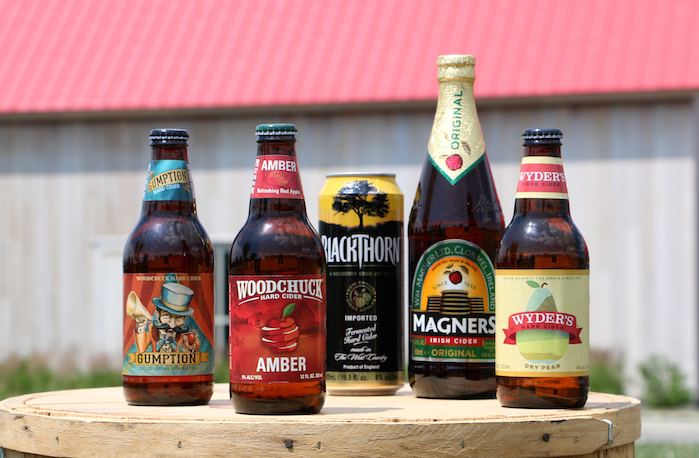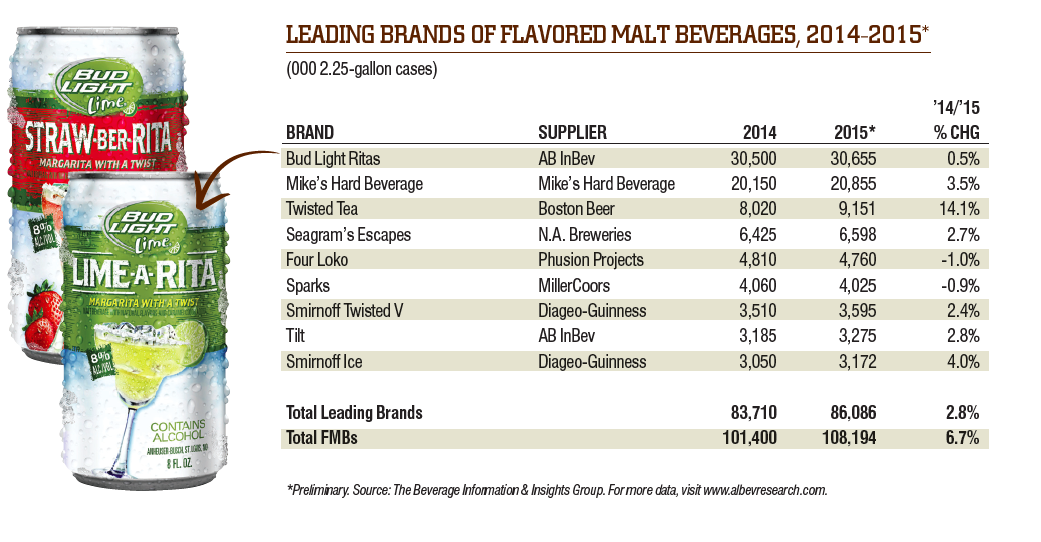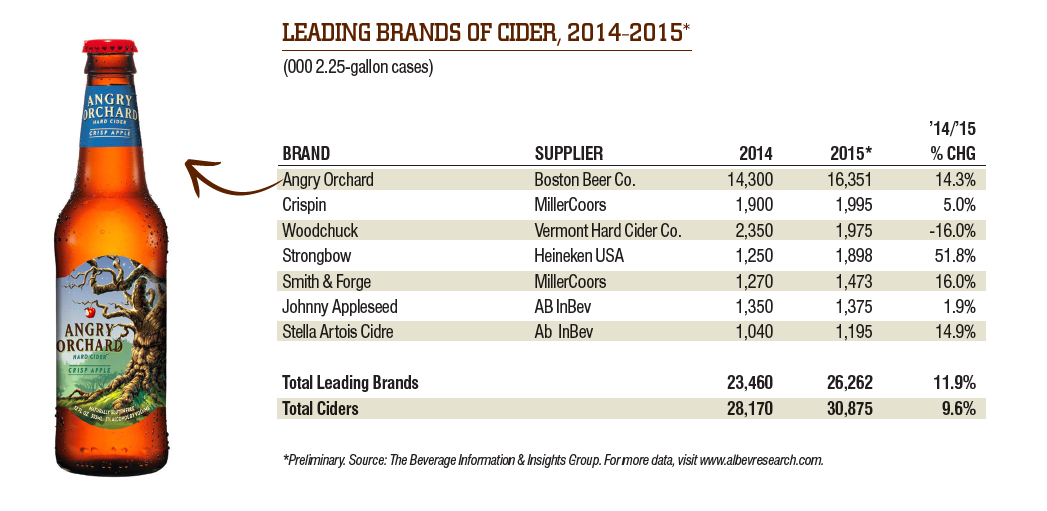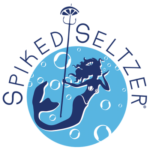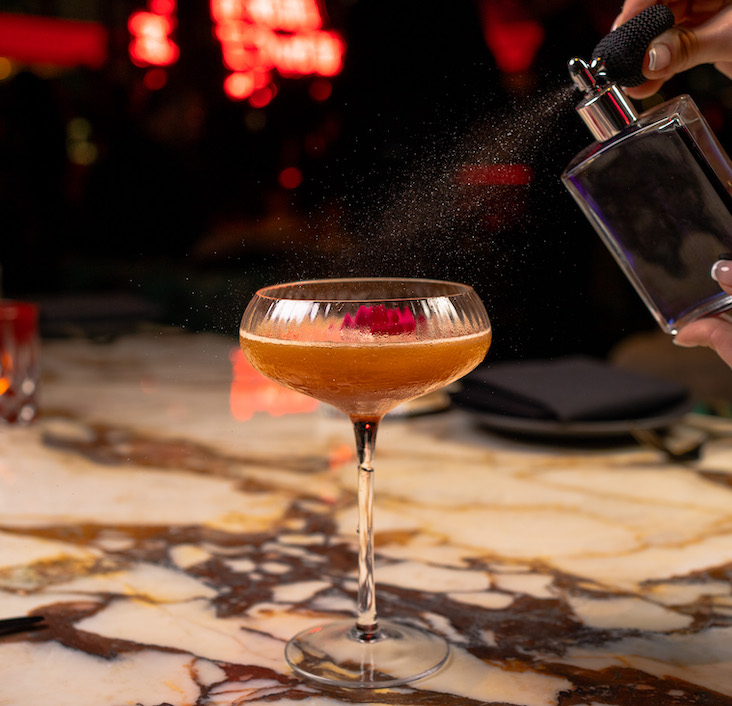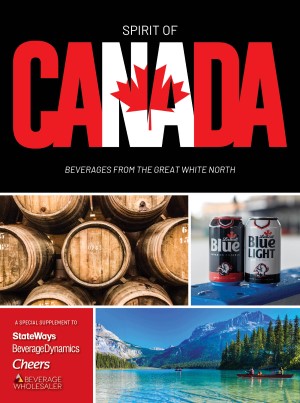Amongst the pale ales, light lagers and Belgian dubbels that jostle for space on the shelves, the beer aisles also have to make room for beverages that are beer’s distant cousins, or may not even be beer at all. For reasons of tradition, statute or utility, these “non-beers” are generally the responsibility of the beer manager.
“Ciders and all malt beverages’ would be the easy way to put it,” says Matt Bardill, describing his portfolio as beer manager for Total Wine at the corporate headquarters in Maryland. “We have others handling wine and spirits, but my team is all beer, plus FMBs, hard sodas, non-alc and ciders—premium, domestic, imports. That’s us.”
Although cider—a fermented fruit beverage that is thus technically a wine—was mentioned by the Romans, the other non-traditional drinks in the beer section are inventions of recent decades.
Non-alcoholic beer uses techniques devised during Prohibition to strip almost all alcohol from beer brewed normally. The result strives to be as beer-like as possible, but the taste is a reminder of how important alcohol is as a carrier of flavor. Other beverages are malt-based and have the strength of beer, but they distance themselves from beer in every other aspect. Alcoholic seltzer water, cane sugar-based and flavored with fruit, may also be a new class of beverage to watch.
These beverages, so different in character and principal ingredients, seem to share only one quality: social function. They are all relatively low in alcohol, dilute and affordable. Since each sub-category may appeal to a slightly (or even radically) different target audience, the beer department is obliged to stock them all. And the beer manager is left to make sense of the rapidly evolving choices.
“I don’t want to say it’s a catch-all,” Bardill says of his non-beers. “But if you tell me the person who wants to drink dry cider is the same person who drinks hard sodas – yeah, right. Those people are on different ends of the spectrum.”
All About The Malts
Wine coolers—home- or bar-made concoctions of wine, fruit juice and a carbonated beverage—emerged as commercial products in the 1980s. When tax codes and distribution tilted to favor beer-based beverages over wine-based beverages, these casual brands, whose flavors had next to nothing to do with their source of alcohol, flipped recipes. Thus, the Flavored Malt Beverage (FMB) was born.
FMBs have also been dubbed as “malternatives,” or “alcopops” by opponents alarmed by their potential appeal to underage drinkers. Many owe their character— and a permissible amount of their alcohol content—to distilled spirits used for flavoring beer-strength beverages that sailed under the flag of spirits brands.
As a category, FMBs grew by 6.7% in 2015 (all data from The Beverage Information Group), led by Bud Light Ritas, Mike’s Hard Beverage and Twisted Tea from Boston Beer, which showed the most dramatic growth in the category at 14.1%. Each of these names actually refers to a family of beverages produced in as many as a dozen flavors, novelty being one of the powerful drivers of FMB sales. Pomegranate, acai berry, goji berry—if consumers didn’t fi rst encounter these obscure fruits in the vodka aisle, they met them in a newly-released FMB.
Chris Ciskey, owner of Yankee Wine & Spirits in Newtown, CT, and the store’s chief beer guy, finds that the FMB category is very sensitive to seasons. “The Mike’s, the Smirnoff Ice, the Bud Light Lime a Rita, those are very summery. Hard lemonades and the fake margaritas, they’re warm weather kind of drinks.” And, he adds that a lot of the consumers are women. “The FMBs skew mostly female and young, too. They want alcohol that doesn’t taste like alcohol.”
Total Wine’s Bardill sees the FMBs as the logical choice for younger drinkers. “If you look at what Millennials have been drinking and what they’ve been trending across other categories, wine and spirits, it’s a somewhat sweeter palate. That’s true of almost anyone at a young age.”
 Not Your Father’s Soda Pop
Not Your Father’s Soda Pop
Hard sodas are either a new category or an addition to the flavored malt beverage category, depending on who’s compiling the data—many analysts and retailers find them different enough to warrant keeping sales data separate. Barely a year old, hard sodas differ from the rest of the fruit-, tea- or cocktail-flavored FMBs in that they are modeled on soda pop, but with a kick. But they, too, are malt-based.
The category roared onto the scene in the summer of 2015 with Not Your Father’s Root Beer, which blended a hand-made aura borrowed from craft beer with old timey nostalgia.
The Not Your Father’s brand stirred interest among traditional and craft beer drinkers usually resistant to FMBs, as well as a younger audience. Henry’s, grounded in the traditions of Northwestern beer brewer Henry Weinhart’s, and Coney Island (made by craft brewer Boston Beer), all reinforce the separation between hard soda and FMBs.
Bardill wonders if hard sodas won some market share from craft beer buyers looking for a seasonal alternative. “It’s a little bit of a stretch, but given the way the bottom dropped out of pumpkin [seasonal beers] last year, I have the theory that people viewed the first hard sodas as a kind of seasonal new thing they hadn’t tried. It’s cool, it’s in the beer section, and everyone’s talking about how you can mix it with cinnamon whiskey or put ice cream into it.”
He now sees the same mad pursuit of new flavors in hard sodas that he sees in the FMB category. Ciskey suspects hard sodas have peaked.
“The sales bear it out, for sure,” he says. “It’s typical with anything that catches on: once one person catches on, every single one of the big companies put one out, but then they have to put out five different types. Not Your Father’s Root Beer still holds pretty strong, but nowhere near where it was when it came out last year. The other ones have definitely kind of fizzled.”
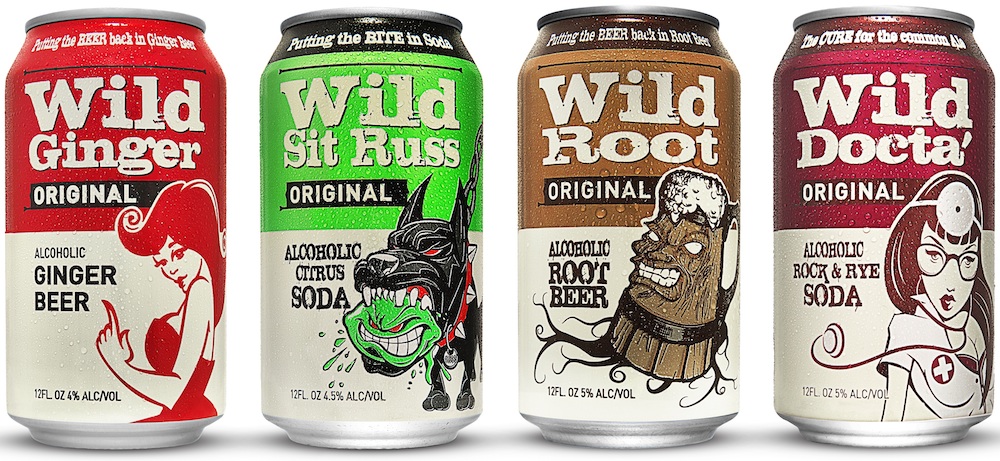
The Wild family of hard root beer and sodas reflect the edgy packaging common to many of these modern releases.
How Do You Like Them Apples
For over a decade, cider has been a beverage haunted by its own potential. It has a long tradition, and a popular following in parts of Europe as both a rustic beverage and, in a more commercialized form, a mainstream choice. Cider was repeatedly predicted to follow the path carved by craft beer—distinctive, local, anti-mainstream—and then it didn’t.
It took Boston Beer, the pioneer craft beer brewer whose success sometimes stretches the bonds of loyalty among beer aficionados, to deliver the breakthrough cider. Angry Orchard was an overnight sensation—but was twenty years in the making. In 2015, it owned half the hard cider market. The cider combines an approachable palate with edgy marketing.
“The new ciders, they’re a little bit sweeter. Especially in that category, you find the American palate tends to go towards sweet a lot of the time,” Ciskey says. “But the packaging, they’ve got the kind of angry-looking trees, which are very eye catching.”
Bardill likens the packaging to a craft beer brand. “It looks like something crazy from California or Vermont. It played to that trend. Compare that to, say, a Woodchuck: that looks like a retro or import.”
And, in fact, traditional Woodchuck has lost market at a steeper rate than Angry Orchard’s gains. But successes lurk at sales positions four, five and seven: Strongbow (51.8% growth, a traditional brand owned by Heineken), Smith & Forge (16%, MillerCoors) and Stella Artois Cidre (14.9%, A-B InBev), proving that old school approaches still have appeal.
 New Kid On The Block
New Kid On The Block
Alcoholic seltzer water is an emerging class of non-beer in the beer department. A few examples have been on the periphery for a while, but it’s no surprise that one of this spring’s entries, Truly Spiked and Sparkling, comes from an affiliate of Boston Beer (see Twisted Tea, Coney Island and Angry Orchard). Ridge says the brand isn’t trending yet, but he has tasted it. “I have to say, it was pretty good,” he opines.
These are not malt beverages, being based on fermented cane sugar, so they claim to be gluten-free. Several brands capitalize on the interest in natural ingredients, incorporating pure fruit, which positions them as the healthy, non-FMB alternative.
SpikedSeltzer claims to be “all natural, low carb, gluten-free, and contains 6% alcohol”—and it’s won a place at Whole Foods. The mermaid logo dispels any doubt that the target audience is female drinkers by the pool, and the same probably applies to Nauti Seltzer.
Stocking Challenges
To the retailer, the whole collection of “non-beer beers” poses the challenge to keep up interest and variety. These beverages fill a need, or a number of different needs, for very different consumers: guests who don’t want beer, yet want a low-alcohol drink; customers who want alcohol’s buzz but don’t enjoy its taste; or consumers who don’t drink alcohol but want a beverage that isn’t childish.
Apart from cider, none of these beverages excites passion: there will never be a festival devoted to flavored malt beverages. But producers will continue to stoke curiosity by launching new flavors and brands, and retailers will have to carry a reasonable range of these workhorse drinks to keep customers happy.
Julie Johnson was for many years the co-owner and editor of All About Beer Magazine. She has been writing about craft beer for over twenty years. She lives in North Carolina, where she was instrumental in the Pop the Cap campaign that modernized the state’s beer laws.

